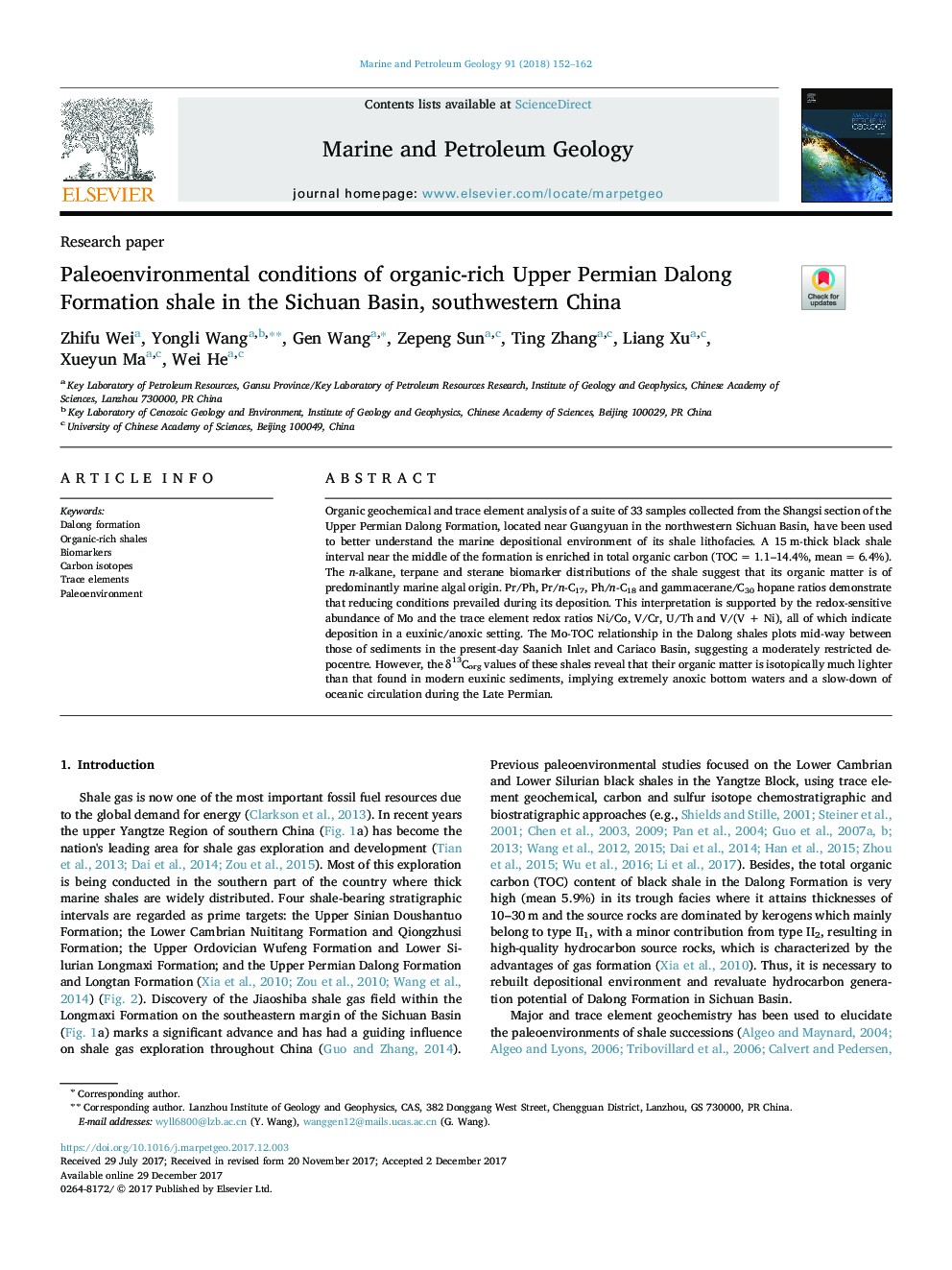| Article ID | Journal | Published Year | Pages | File Type |
|---|---|---|---|---|
| 8909162 | Marine and Petroleum Geology | 2018 | 11 Pages |
Abstract
Organic geochemical and trace element analysis of a suite of 33 samples collected from the Shangsi section of the Upper Permian Dalong Formation, located near Guangyuan in the northwestern Sichuan Basin, have been used to better understand the marine depositional environment of its shale lithofacies. A 15â¯m-thick black shale interval near the middle of the formation is enriched in total organic carbon (TOCâ¯=â¯1.1-14.4%, meanâ¯=â¯6.4%). The n-alkane, terpane and sterane biomarker distributions of the shale suggest that its organic matter is of predominantly marine algal origin. Pr/Ph, Pr/n-C17, Ph/n-C18 and gammacerane/C30 hopane ratios demonstrate that reducing conditions prevailed during its deposition. This interpretation is supported by the redox-sensitive abundance of Mo and the trace element redox ratios Ni/Co, V/Cr, U/Th and V/(V + Ni), all of which indicate deposition in a euxinic/anoxic setting. The Mo-TOC relationship in the Dalong shales plots mid-way between those of sediments in the present-day Saanich Inlet and Cariaco Basin, suggesting a moderately restricted depocentre. However, the δ13Corg values of these shales reveal that their organic matter is isotopically much lighter than that found in modern euxinic sediments, implying extremely anoxic bottom waters and a slow-down of oceanic circulation during the Late Permian.
Related Topics
Physical Sciences and Engineering
Earth and Planetary Sciences
Economic Geology
Authors
Zhifu Wei, Yongli Wang, Gen Wang, Zepeng Sun, Ting Zhang, Liang Xu, Xueyun Ma, Wei He,
